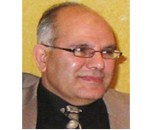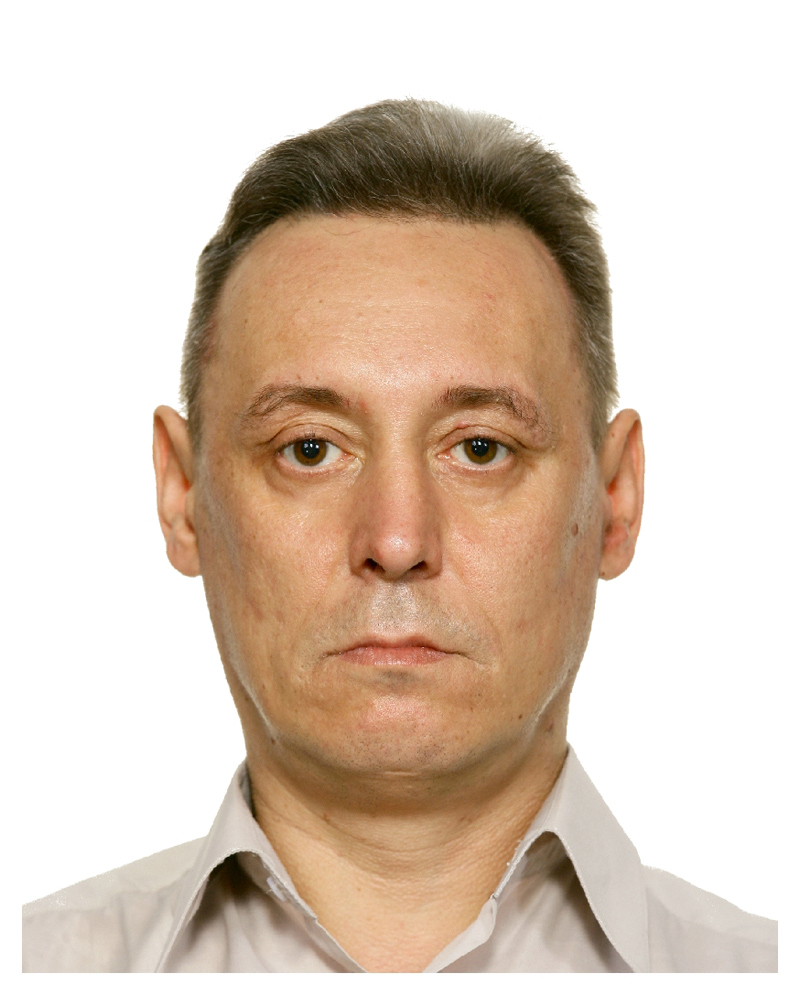Day 2 :
Keynote Forum
Larisa Klapshina
Nizhny Novgorod State University/IOMC RAS, Russia
Keynote: Novel sensitive sensors of intracellular viscosity and potential anticancer theranostic agents prepared on the porphyrazine pigments platform for specifically personalized medicine.
Time : 08:30- 9:00

Biography:
Larisa Klapshina received her Ph. D in 1992 from the Razuvaev Institute of Organometallic Chemistry of Russian Academy of Sciences, IOMC RAS, (Nizhny Novgorod, Russia). Currently she is senior researcher at IOMC RAS and at the Laboratory of Optical Theranostics in Nizhny Novgorod State University). She and her group work in the area of organic and organometallic synthesis and the functional materials for biophotonics and biomedicine. She is author of about 100 artcle
Abstract:
The various techniques available for cancer diagnosis and therapy are traditionally considered as separate approaches in medical care. But nowadays development of the multifunctional agents which combine modalities for cancer diagnosis, treatment and real-time monitoring of treatment progress is real imperative for specifically personalized medicine. Here we report series of novel tetracyanotetra(aryl) porphyrasine dyes which are found to be red-emitting fluorescent ‘molecular rotor’ i.e. the fluorescence lifetime and the quantum yield of these macrocycles strongly increase as a function of environment viscosity. On the other hand, they works as an efficient PDT sensitizer, i.e. it induces apoptosis and necrosis in cells upon irradiation with red light through formation of singlet oxygen. We demonstrated that PDT in vitro and in vivo using cyano-aryl porphyrasine macrocycles is accompanied by a significant viscosity increase by monitoring the fluorescence lifetime of the rotor. We suggest that this increase could be used as a completely new type of diagnostic and dosimetry tool during a PDT treatment providing feedback information about individual therapy status. In addition, the results of in vivo experiments showed that PDT sensitizers prepared on the cyano-aryl porphyrazine pigment platform bound to gadolinium cation demonstrate the potential to become an extraordinarily effective multimodal agent for theranostics, representing a new approach to PDT based on real-time monitoring of the therapy in combination with precise MRI /fluorescence diagnostics of tumours.
Keynote Forum
Fabio Marinelli
University of L’Aquila, Italy
Keynote: Synthesis of indole derivatives through transition metals-catalyzed cyclization of 2-alkynylaniline derivatives
Time : 9:00- 9:30

Biography:
Fabio Marinelli obtained his degree in Chemistry at the University of Rome in 1980. In 1983 he became Organic Chemistry Researcher and, since 2001, he has been Associate Professor of Organic Chemistry at the University of L’Aquila. His research topics include the application of transition metals as catalysts in the synthesis of heterocycles such as indoles, quinolines, lactones and other. He has published more than 115 papers in reputed journals and is member of International Society of Heterocyclic Chemistry.
Abstract:
Indole derivatives are one of the most extensively studied class of heterocyclic compounds. The indole nucleus is a fundamental constituent of many natural and synthetic products with biological activity. Moreover, fused indole derivatives display a number of interesting pharmacological properties. Cyclization of 2- alkynylanilines catalyzed by transition metals represents a powerful tool for the build-up of the indole nucleus, and affords mainly 2-substituded indoles, although sequential functionalizations of nucleophilic 3-position have been reported. An useful development of this methodology is represented by Pd-catalyzed reaction of 2-alkynyltrifluoroacetanilides with a variety of organic electrophiles such as aryl, heteroaryl, alkyl and alkynyl halides, vinyl triflates, arenediazonium tetrafluoroborates, boronic acids, a-iodoenones and allyl esters. This approach is based on the activation of the triple bond towards intramolecular nucleophilic attack by –NHCOCF3 by means of coordination to an organopalladium(II) intermediate; sequential reductive elimination results in the formation of 2,3-disubstituted indoles bearing the organic moieties linked to the -3 position). Furthermore, this methodology allows a straightforward assembly of polycyclic indole derivatives such as indoloquinazolines, indoloquinazolinones, and indoloquinolines.
Keynote Forum
Alexander V. Sirotkin
Constantine the Philosopher University and Research Institute of Animal Production, Slovakia
Keynote: Plant molecules affecting female reproductive functions
Time : 9:30- 10:00

Biography:
Prof. A.V. Sirotkin, PhD, DrSc is working as Professor at the Constantine the Philosopher University, as a Research Scientist at Research Institute of Animal Production in Nitra and as a Visiting Professor at the King Saud University in Ryiadh. He has about 600 publications including 120 full papers in the international journals. He is a member of editorial boards of 4 international journals and a recipient of more than 10 national and international awards.
Abstract:
The aim of our in vitro and in-vivo studies was to examine the potential influence of some medical and food plants and their constituents on ovarian functions and their potential usefulness as pharmacological stimulators of fecundity and protectors against the influence of environmental contaminants. For this purpose, we have study the influence of green tea, rooibos, ginkgo, flaxseed, yukka extracts, as well as of plant molecules resveratrol, curcumin, quercetin, daidzein, diosgenin on proliferation, apoptosis, release of hormones and response to gonadotropins of murine, porcine and rabbit ovarian cells as well as on rabbit fecundity. It was observed, that green tea, rooibos, ginkgo, flaxseed, extracts, as well as of resveratrol, curcumin, quercetin, daidzein, diosgeninare able to suppress proliferation, promote apoptosis, to alter the release of steroid hormones and to inhibit the response of cultured ovarian cells to hormonal stimulators FSH and IGF-I. On the other hand, some of these plants were able to prevent the action of environmental contaminants benzene, xylene and toluene on ovarian cells. Yucca extract expressed an opposite effect. Furthermore, feeding of rabbits with yucca and curcumin increased their fecundity. These observations suggest potential direct inhibitory influence of food and medical plants green tea, rooibos, ginkgo, flaxseed on ovarian functions. The similarity in plant and plant constituents effects suggest that the observed plant effects can be due to presence of curcumin, quercetin, daidzein and diosgenin. The potential anti-reproductive effect of these plants should be taken into account by their consummation. On the other hand, some plants or plant molecules could be used as stimulators of reproduction and fecundity and protectors against the influence of environmental contaminants.
- Computational Chemistry and Chemical Biology | Natural Products Chemistry | Pharmaceutical Analysis

Chair
Larisa Klapshina
Nizhny Novgorod State University, Russia

Co-Chair
Marco Marazzi
University of Lorraine-Nancy & CNRS, France
Session Introduction
Emmanuel Roulland
Université Paris Descartes, France
Title: Total Synthesis of Tiacumicin B Aglycone, a DFT-Guided Strategy

Biography:
Abstract:
Tiacumicin B is an antibiotic endowed with the remarkable ability to interact with a new biological target giving it an inestimable potential in the context of the ever-growing and worrisome apparition of resistances of bacteria and mycobacteria to antibiotics. The development of an efficient synthesis of this complex molecule will allow accessing valuable analogues. We have achieved the total synthesis of the tiacumicin B aglycone featuring the DFT-guided strategy concept. Macrolactone thus obtained is ready for subsequent glycosylation step. Starting from known alcohol (±)-3, this 16 steps synthesis was performed in a 3.6 % overall yield, only 4 steps dealing with the installation or the removal of protective groups. Relying on DFT predictions, we dared to use an unprecedented [2,3]-Wittig rearrangement of the propargyl ether of tertiary allylic alcohol to synthesis the most densely functionalized fragment of the target. We also accessed the tetrasubstituted C12-C15 diene stereoselectively using an innovative strategy based on the sequence allene-alkyne Pd/Cu-catalyzed cross-coupling / selective hydrosulfuration / Pd-catalyzed Kumada-Corriu cross-coupling of an alkenylsulfide function. To end this synthesis the E configuration of the C4=C5 bond was controlled thanks to a selective cross-metathesis of vinylborate, and a Suzuki cross-coupling was used to install the missing C1-C3 fragment. The final macrolactonization step was found to be ring-size-selective as again predicted by DFT.
Aramice Y. S. Malkhasian
King Abdulaziz University, Saudi Arabia
Title: Automated Drug Design of Kinase Inhibitors to treat Chronic Myeloid Leukemia

Biography:
Dr. Aramice Y. S. Malkhasian completed Ph.D. at Concordia University 1985and did Research scientist at McGill with M. A. Whitehead at 1995, at 2003 and 2004 work with Prof Michael Sevillaand Prof. Ferman Chaves at Oakland university. Currently professor at King Abdulaziz University
Abstract:
Medicinal chemistry has in the past been dominated by learned insights from experienced organic chemists. However, with the advent of computer based methods, computer aided drug design has become prominent. We have compared here the ability of expert chemists to purely automated methods and found that the automated method produces a better potential candidate drug than the expert input. The example chosen is based on inhibitors to Abl-kinase and the successful anti-leukaemic drug imatinib. The proposed molecule is a simple modification of nilotinib and has a docking energy of 4.2 kJ/mol better than the best intuitive molecule
Marco Marazzi
University of Lorraine−Nancy & CNRS, France
Title: DNA photosensitization: irreversible lesions caused by non-covalent binding with organic dyes

Biography:
After completing a PhD at the University of Alcalá, Madrid (Spain) in 2013, Marco Marazzi was a Humboldt Fellow at the Karlsruhe Institute of Technology (Germany). Starting from 2015, he is a researcher at the French National Center for Scientific Research (CNRS) and at the University of Lorraine in Nancy (France). Always interested in photoinduced processes of biologically relevant systems, he studied especially organic molecular switches applied to peptide conformational changes, channelrhodopsin as an optogenetic tool, and DNA photosensitization via Type I and II processes. His expertise covers a broad range of modeling techniques.
Abstract:
Although diverse DNA photostability mechanisms exist, organic dyes in the vicinity of DNA can induce damages through indirect light absorption. Hence, understanding the underlying mechanisms involved in photosensitized DNA damage is crucial to describe and possibly anticipate photobiological risks, as well as to design anticancer phototherapies. Here, we present the results concerning our latest studies on different reactivities induced by common organic dyes, through multiscale molecular modeling techniques coupled to spectroscopy experiments. Especially, the photochemistry of benzophenone – a paradigmatic DNA photosensitizer – and its implications in the competitive processes of hydrogen abstraction and energy transfer to DNA will be described. Electron transfer is also considered by the interaction of DNA with two fluorescent dyes widely used in cellular biology: nile blue and nile red. Finally, the potentialities of a very recently sinthesized novel carbazole in photosensitizing DNA through two-photon absorption will be reported. Especially, it will be shown how it can induce DNA strand break upon photoionization with the production of a solvated electron. The main advantage is the low-energy (infra-red) irradiation required also in the absence of molecuar oxygen, i.e. a prodrug of great interest for the potential treatment of solid tumors.
Alvaro Escribano
Universidad Carlos III de Madrid, Spain
Title: Patent propensity, R&D and market competition: Dynamic spillovers of innovation leaders and followers

Biography:
Abstract:
Sundaram Singh
Indian Institute of Technology (BHU), India
Title: An Efficient One Pot Multicomponent synthesis Of Some Novel Substituted Imidazoles using Nano Zirconia Catalyst Under solvent Free Conditions: A Greener “NOSE†approach

Biography:
Dr sundaram singh has completed her PhD at the age of 30 years from BHU, VARANASI . She is the Associate Professor of Chemistry Deptt, IIT(BHU),Varanasi. She has published more than 20 papers in reputed journals. Her research area is green synthesis, organic synthesis and evaluation of biological activity.
Abstract:
An increase in regulatory limitations on the use, manufacture and disposal of perilous organic solvents has focused attention on the development of non-hazardous alternatives such as solvent-less synthesis, multicomponent reactions and reusable heterogeneous catalysts for the sustainable development of chemical enterprise. These organic reactions possess many advantages over traditional reactions in organic solvents. For example, solvent-less, multicomponent reactions with reusable heterogeneous catalysts reduce the consumption of environmentally hazardous solvents and minimize the formation of other waste. The reactions occur under mild conditions and usually require easier workup procedures and simpler equipment.
Nano zirconia (ZrO2) have been widely investigated in the past decades due to their multiple potential applications. The crystal phase of ZrO2 (monoclinic and tetragonal) strongly influences the catalyst activities and selectivities.
A highly efficient method for the synthesis of substituted imidazoles from a multicomponent reaction of isatin derivatives with ammonium acetate and aromatic aldehydes under solvent free conditions has been established. The reaction is supposed to proceed via nano ZrO2-catalyzed C=O bond activation followed by the formation of diamine intermediate and its condensation with ZrO2 activated isatin derivatives. Because of the simple and readily available starting materials, easy operation and high bioactivity of imidazoles, this strategy can be broadly applied to medical chemistry. The recyclability of the nano ZrO2 catalyst is another emphasis of proposed methodology.
Scheme 1: Synthesis of imidazole derivatives 4a-r via multicomponent reaction of isatin derivatives 1a-f with ammonium acetate 2 and substituted aromatic aldehydes 3a-f.
Shaaban K. Mohamed
Manchester Metropolitan University, UK
Title: Towards improving in drug delivery using Silver nano-techniques

Biography:
Shaaban K. Mohamed has completed his PhD at the age of 32 years from Minia University and postdoctoral studies from Didsburg University School of Chemistry, Germany and Manchester Metropolitan University, UK.. He is member of RSC and received the Knowlege Exchange award 2013, MMU, UK . He has published more than 260 papers in reputed journals and has been serving as an editorial board member of repute journals such as International Journal of Chemistry and Pharmaceutical Research, Greener Journal of Pharmacy and Pharmacology, and Journal of Pharmaceutical and Applied Chemistry.
Abstract:
The emergence of multidrug resistant (MDR) bacteria has necessitated the development of novel groups of antibiotics that effectively block or subvert bacterial growth [1,2]. It has been reported that different efforts and diverse investments have been made to develop novel strategies for improving the concept of antibiotic delivery that could enhance the limited activity of those vital antibiotics against such types of bacteria [3,4]. In the present study, amoxicillin trihydrate and Neomycin sulphate were used for the first time as both reducing and capping agents in synthesis of silver nanoparticles (AgNPs). The synthesized AgNPs were evaluated for their antibacterial and synergistic activity with antibiotics against selected human pathogenic bacteria.
Sangeeta Jagtap
PDEA’s Baburaoji Gholap College, India
Title: Use of Curcumine, a Pharmaceutically Useful Compound in Organic Reactions

Biography:
Sangeeta Jagtap received her M.Sc.in Organic Chemistry and is a recipient of Gold Medal from Bombay University (1992), India. She completed her Ph.D. from National Chemical Laboratory, Pune, India, under the guidance of Dr. R. M. Deshpande. She worked as a visiting scholar at Stanford University, California, USA, under the guidance of Prof. Barry Trost. She has also completed a ‘Post Graduate Diploma in Industrial Program in Pharmaceutical chemistry and Production’ and has cleared many competitive examinations like NET, SET, GATE and the tests organized by BARC. Presently she is working as Associate Professor at Baburaoji Gholap College, Sangvi, Pune, India. Her research interests are methodology, organic synthesis and catalysis. She has publications in reputed journals like Org. Lett., Tet. Lett., Cat. Today etc. She has authored a book named ‘Pharmaceutical, Medicinal and Natural Product Chemistry’.
Abstract:
Curcumin, mainly isolated from turmeric, for long is known for its anti-inflammatory and antioxidant activity. It is also known to be effective against neoplasms, Alzheimer's disease, Hodgkin's disease. There are large numbers of references available in literature about its biological activity and mode of action etc. Contrary to the popular belief that turmeric to be used only in household or as a medicine, we found an entirely different dimension to the whole idea of its activity. Curcumin is found to be active as catalyst. When complexed with palladium, it acts as a catalyst for coupling reactions. It catalyzes efficiently the Heck and Suzuki reactions almost upto 90-95%. The respective products have been isolated in good yield. Thus Curcumin is found to act as an efficient ligand in catalysis study.
- Computational Chemistry and Chemical Biology | Heterocyclic Chemistry | Pharmaceutical Analysis

Chair
Vladislav Yu Korotaev
Ural Federal University, Russia

Co-Chair
Daisuke Yamamoto
Kitasato University, Japan
Session Introduction
Daisuke Yamamoto
Kitasato University, Japan
Title: Manganese-catalysed hydroperoxidation of carbon–carbon double bonds using molecular oxygen present in air and hydroxylamine under ambient conditions

Biography:
Daisuke Yamamoto has completed his PhD in 2006 at Kitasato University (Prof. Toshiaki Sunazuka). Subsequently, he became a researcher at the Kitasato Institute (Prof. Satoshi ÅŒmura) and joined the group of Prof. Barry M. Trost at Stanford University, as a postdoctoral fellow. In 2008, he started his academic career as an Assistant Professor at Kitasato University. His research focuses on the development of redox reactions with attendant applications in biologically active molecules.
Abstract:
Developing a new methodology for transition metal-catalysed oxidation reactions has been extensively studied in the recent decade, and molecular oxygen is essentially recognised as an ideal oxidant. Despite developing several elegant oxidation processes involving molecular oxygen as a sole oxidant, methodologies for directly incorporating molecular oxygen into organic substrates remains a major challenge in synthetic chemistry. In continuation of our studies on manganese-catalysed oxidative reactions, we have found that manganese(III) acetylacetonate is a highly efficient catalyst for hydroperoxidation of carbon-carbon double bonds of enynes as well as styrene derivatices using N-hydroxyphthalimide, N-hydroxybenzotriazole or N-hydroxysuccinimide under mild reaction conditions. This reaction proceeded at room temperature through the direct incorporation of molecular oxygen present in air. The required catalytic loading of manganese(III) acetylacetonate is extremely low (generally 0.02–0.5 mol%, and a minimum of 0.001 mol%). On the basis of this knowledge, we recently reported a manganese-promoted oxidative cyclisation of unsaturated oximes to provide 4,5-dihydroisoxazoline alcohols. In addition, we applied our method to the synthesis of hydroxamic acid, which is a promising antitrypanosomal agent for the management of Chagas disease. In the presentation, we will also discuss the further studies.

Biography:
El-Sawy has completed her PhD at the age of 28 years from Al-Azher University and postdoctoral studies from National Research Centre, Cairo Egypt. She has published more than 34 papers in reputed journals. Current position: Professor Doctor of Organic Chemistry at Chemistry of Natural Compounds Department, National Research Centre (NRC).
Abstract:
Resistance to conventional chemotherapy, leads to the need for development of novel safe and effective cancer therapies with new mechanism of action. Anti-angiogenic drugs are major example of such newly developed targeted therapeutics .In cancer drug development arena, coumarin-type compounds have been reported to bosses marked cytotoxic activities, in addition act as novel angiogenesis inhibitors. In this respect,a new series of coumarin derivatives was synthesized starting from 2-oxo-2H-coumarin-6-sulfonyl chloride (1), 6-nitro-2-oxo-2H-coumarin-3-sulfonyl chloride (10) and 6-amino coumarin-2-one (19). Reaction of 1 or 10 with 2-cyanoacetohydrazide, 2`-acetyl-2-cyanoacetohydrazide or 3-amino-5-pyrazolone afforded pyrazoline derivatives. While reaction of1 or 10 with malononitrile followed by reaction with hyadrazine hydrate, urea, thiourea or guanidine led to the formation of pyrazole and pyrimidine derivatives. On the other hand, compound 19 on reaction with VilsmeierHaack reagent yielded the corresponding aldehyde20. Compound 20 under reaction with chlorosulfonylisocyanate afforded N-chlorosulfonyl amid which cyclized to give pyranobenzothiazine derivative 25. The tested compounds 4, 5, 8, 12, 13 and 14 were non-cytotoxic against hepatocellular carcinoma cells (HepG2) using MMT. These non-cytotoxic compounds were evaluated as anti-angiogenicagent. Collectively, our results indicate that, coumarin molecules 4, 5, 8, 13 and 14 can be utilized as lead compounds to develop potential non-toxic angiogenesis inhibitors and small molecular ligands to target (HepG2), which was in concomitant with molecular docking results. 1-Acetyl-5-amino-4-(2-oxo-2H-chromene-6-sulfonyl)-1,2-dihydro-pyrazol-3-one (4) considered a promising anti-angiogenic agent, where it exhibited MMP-dependent anti-migratory activity and down regulated CD105.

Biography:
Korotaev V. Yu. graduated from the Ural State University in 1993 and has completed his PhD in 1998. Currently he works at the Department of Organic Chemistry of the Ural Federal University as a senior researcher. He has published more than 65 papers in peer-reviewed journals. His area of scientific interests includes unsaturated nitro compounds, heterocyclic compounds and fluoroorganic chemistry.
Abstract:
The [3+2] cycloaddition of sodium azide and stabilized azomethine ylides to 3-nitro-2-(trihalomethyl)-2H-chromenes 1 and 2 was studied and cycloadducts 3‒8 were synthesized. The cytotoxic activity of D3-annulated chromane derivatives is discussed.

Biography:
Tayebeh Hosseinnejad received his BSc, MSc and PhD degrees from University of Tehran in 2001, 2003 and 2007 respectively. She completed his Doctoral thesis under supervision of Prof. Hassan Behnejad. She joined as an Assistant Professor in Alzahra University, Iran. Her research interests focuses on computational organic and organometallic chemistry and computational thermodynamics.
Abstract:
Halloysite nanotubes (HNTs), with general formula of (Al2(OH)4Si2O5.2H2O) possess high surface area, tubular morphology and high mechanical strength. In HNTs a monolayer of water separates the unite layers in HNTs. Moreover, the exterior and interior surfaces of HNTs are chemically different. Tetrahedral SiO4 groups are located in the outer surface while the octahedral gibbsite Al(OH)3 sheet forms the inner surface. Recently, functionalization of the surface of HNTs and immobilization of metal nano particles are considered as a potent method for modification of the features of HNTs and expanding their applications specially as an effective catalyst in the selective synthesis of an specific isomer of pharmacetual compounds. In continuation of our attempt to introduce computational modeling of structural, electronic and thermochemical properties of heterogeneous nanocatalysts to design the regioselective synthesis of 1,2,3-triazoles as pharmacetual compounds, herein, we present a novel heterogeneous catalyst based on functionalization of HNTs with (3-chloropropyl) trimethoxysilan, thiosemicarbazide and furfural and incorporation of copper NPs. Considering the importance of understanding the surface chemical and physicochemical properties of functionalized HNTs, we investigated the computational modeling of regioselective synthesis of disubstituted 1,2,3-triazoles. Strictly speaking, we concentrated on the quantitative description of structural and electronic features of interactions between copper NPs and thiosemicarbazide functionalized HNTs modified with furfural (denoted as HNTs-T-F) via density functional theory (DFT) and quantum theory of atoms in molecules (QTAIM) approaches. Then, we applied our computational modeling in the design of reaction path so that it can be led to the synthesis of an specific isomer of disubstituted 1,2,3-triazoles as pharmacetual compounds.
Gisela Brändén,
University of Gothenburg, Sweden
Title: Structural studies of the novel antibacterial target MraY and its interaction with the natural inhibitor compound tunicamycin

Biography:
Abstract:
The rapid increase of antibiotic resistance has created an urgent need to develop novel antibacterial drugs. I will describe the crystal structure of the promising bacterial target phospho-N-acetylmuramoyl–pentapeptide translocase (MraY) in complex with the nucleoside antibiotic tunicamycin. The structure reveals the mode of action of several related natural-product antibiotics and also gives an indication on the binding mode of the MraY UDP–MurNAc–pentapeptide and undecaprenyl-phosphate substrates.
(Hakulinen et al. Nature Chemical Biology, 13:265-267, 2017)
Wajaht Amin Shah
University of Kashmir, India
Title: Synthesis and screening of ursolic acid-benylidine derivatives as potential anti-cancer agents

Biography:
Dr. Wajaht Amin Shah has completed his Ph.D. in natural product chemistry. He has published papers in various international journals on natural product chemistry and synthetic chemistry. He has produced various doctoral and pre doctoral students under his supervision. He is presently working as Associate Professor in the department of chemistry university of Kashmir and is actively involved in guiding PG students and doctoral students.
Abstract:
Ursolic acid present abundantly in plant kingdom is a well-known compound with various promising biological activities including, anti-cancer, anti-inflammatory, hepatoprotective, antiallergic and anti-HIV properties. Herein, a library of ursolic acid-benzylidine derivatives have been designed and synthesized using Claisen Schmidt condensation of ursolic acid with various aromatic aldehydes in an attempt to develop potent antitumor agents. The compounds were evaluated against a panel of four human carcinoma cell lines including, A-549 (lung), MCF-7 (breast), HCT-116 (colon), THP-1 (leukemia) and a normal human epithelial cell line (FR-2). The results from MTT assay revealed that all the compounds displayed high level of antitumor activities compared with the triazole analogs (previously reported) and the parent ursolic acid. However, compound 3b, the most active derivative was subjected to mechanistic studies to understand the underlying mechanism. The results revealed that compound 3b induced apoptosis in HCT-116 cell lines, arrest cell cycle in the G1 phase, caused accumulation of cytochrome c in the cytosol and increased the expression levels of caspase-9 and caspase-3 proteins. Therefore, compound 3b induces apoptosis in HCT-116 cells through mitochondrial pathway.
